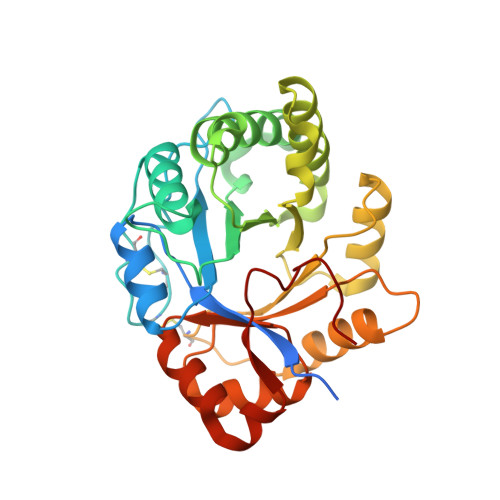Crystallization and preliminary X-ray diffraction analysis of a class II phospholipase D from Loxosceles intermedia venom.
Ullah, A., de Giuseppe, P.O., Murakami, M.T., Trevisan-Silva, D., Wille, A.C., Chaves-Moreira, D., Gremski, L.H., da Silveira, R.B., Sennf-Ribeiro, A., Chaim, O.M., Veiga, S.S., Arni, R.K.(2011) Acta Crystallogr Sect F Struct Biol Cryst Commun 67: 234-236
- PubMed: 21301094
- DOI: https://doi.org/10.1107/S1744309110050931
- Primary Citation of Related Structures:
3RLG - PubMed Abstract:
Phospholipases D are the major dermonecrotic component of Loxosceles venom and catalyze the hydrolysis of phospholipids, resulting in the formation of lipid mediators such as ceramide-1-phosphate and lysophosphatidic acid which can induce pathological and biological responses. Phospholipases D can be classified into two classes depending on their catalytic efficiency and the presence of an additional disulfide bridge. In this work, both wild-type and H12A-mutant forms of the class II phospholipase D from L. intermedia venom were crystallized. Wild-type and H12A-mutant crystals were grown under very similar conditions using PEG 200 as a precipitant and belonged to space group P12(1)1, with unit-cell parameters a = 50.1, b = 49.5, c = 56.5 Å, β = 105.9°. Wild-type and H12A-mutant crystals diffracted to maximum resolutions of 1.95 and 1.60 Å, respectively.
Organizational Affiliation:
Centro Multiusuário de Inovação Biomolecular, Departamento de Física, Universidade Estadual Paulista (UNESP), São José do Rio Preto-SP, Brazil.


















